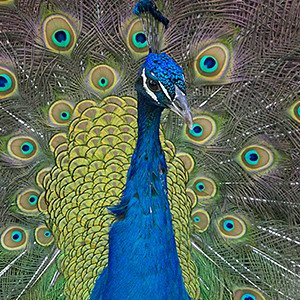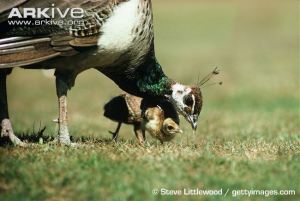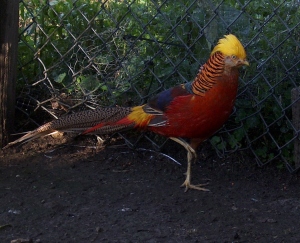For those of you that do not know, I have had my two goldfish (Midas the fantail and Jones the comet) for over four years. Neither of them are still gold, but that’s besides the point. I’m a very good fish mom, and I’ve done a lot of research over the years about how to take care of them (it’s not as easy and simple as I first thought). I actually spend a lot of time worrying about my fish, which has led to a recent attempt to fix an ongoing problem that has pretty much resulted in failure. What did I do wrong? We’ll get there.
In the Beginning…
When I got them, I was a senior in high school. Like any other brilliant teenager, I thought, “Hey! I should do something without thinking it through!” So I went out and bought Midas, my beautiful little fantail. Initially, my supplies consisted of a one gallon fishbowl and some food flakes. Ha! Naiveté! But when I got home with my new little fishy, I had no idea that he would be spending his first several days with me sitting at the bottom of his bowl, not moving much, and just generally hating life/the world. So, I decided he needed a real tank and room to swim.
I got a ten gallon aquarium and dressed it up with gravel and fake plants. In these first few days I did some basic research and discovered goldfish are actually just little poopers that need good filtering, so I got one of those too. [Note: I know I broke one of my own rules by not doing research until after I bought a pet, but what can I say about high school me? I didn’t really take anything seriously then.] Despite his new digs, though, Midas’s outlook on life did not improve much. He still just kinda hovered in a corner of the tank being depressed. So, I then decided he needed a friend. Enter Jones, stage left. They were roughly the same size (and actually grew pretty much in sync for about the first two years) and they were instant best friends. Every time I looked over at the tank, there they were, swimming around together. Ahhh those blissful times.
The Problem
They have grown quite a bit since I got them, but in those early days I had no idea that you are not supposed to keep a fancy breed with a faster-swimming breed because there isn’t a level playing field for food (and in turn, growth). So in the last year and a half or so, I started to notice that Jones was out-growing Midas quite significantly, and I was worried that Midas wasn’t getting enough food. To add to the problem, Jones interpreted his new physical prowess as permission to be a little jerk fish.
Jones had been getting worse and worse with how he treated his tank-mate. At first, I only noticed that their little games of tag (where one of them would swim up to the other one and bump him and then swim away) had become one-sided. However, it still seemed friendly. Jones would swim up to Midas and tap him and swim away. But as the size disparity grew, so did the harshness of their little game. I noticed more aggression on Jones’s part, mostly around feeding times at first, but then just any time he felt like it (and then just constantly). For a while now, I had been watching Jones just become awful as he constantly chased the slower-swimming Midas around the tank, pushing him into the sides and corners, and just overall harassment. The kicker? Midas seemed to take the abuse with a grin. On the off times when there was peace in the tank, he would still be by Jones’s side every second, and he even hid behind the larger fish when something happened to startle them. It was even a little cute how Jones got all protective when they were both hiding in a corner (because, well, fish hide all the time, when anything in the room moves).
My Solution
I had been dreading their behavior, and even more dreading separating them. To anyone else, this would seem like the ideal solution, but I didn’t exactly have the room/time/money for another tank set-up and I knew it just wouldn’t work with these two. You see, I go to school out of state, and twice a year I move my fish from Illinois to Missouri (and vise versa). Mostly we’ve kept them together in various temporary containers, but one time (after the aggression had started but before it got really bad) we moved them in two separate tupperware containers. Since the trip is over six hours, we leave the day before move-in after my parents get off work and spend the night in a hotel before moving in the next morning (because my parents also have to then turn around and make the drive back after helping me haul boxes and a heavy tank all morning). So anyway, we had the containers sitting next to each other in the hotel with the lids off. We kept laughing because it looked like Midas was going to try to jump over into Jones’s container. True fish love. A bromance for the ages (even though I have no idea if they are male or female, I just call them my boys).
So separation wasn’t the answer. If I did separate them, Midas would have gone back to his depression and would have needed another friend anyway. This past August, I did upgrade them to a 20 gallon tank hoping that would stem the worst of the fish bullying, but alas, it just gave Jones more room to chase Midas around. After all the watching and worrying and hair-pulling-out, I finally decided on an internal tank separator (the box specifically said it could be used for “separation needs due to breeding or aggressive fish”). It’s the perfect solution, right? Jones can’t physically abuse Midas, but they can still look at each other and be by one another. Well…
In Conclusion
I put the divider in three days ago. Now, every time I look at my tank, instead of the horrible chasing thing happening, all I see is Midas and Jones looking longingly and one another through the mesh. They are constantly swimming together next to the divider. I don’t think I’ve seen Midas move away from the divider other than to feed, except once to hide behind a plant when the tank lid wouldn’t close gently because it was stuck. Sometimes I could swear that they are having a conversation in some sort of fish language (and okay, I might be going a little bit crazy but that’s honestly what it looks like). It just breaks my heart to see them like this, but it will hurt either way. It’s one of those classic catch-22’s; I’m damned if I do, damned if I don’t. So basically, their unhealthy/abusive relationship cannot be fixed. But on the bright side, at least this way they can’t physically attack each other (that is to say Jones can’t attack Midas).
So that’s the story of how my two goldfish are the best/worst friends and how they are driving me nuts. Maybe it’s just me being neurotic, maybe it’s the fact that I’ve had them so long, or maybe it’s just that I have no other pets here on campus away from the zoo, but I’m a little overly emotionally-invested in my fish. I know I will cry for days and days if anything happens to them. And now every day I get to watch them long to be together, knowing that I can never let them be together again. And on that depressing note, I’ll end this post and go look at cute pictures of baby animals instead of staring at my tank feeling sad.
Pictures to (hopefully) come soon! The tank is still a little dirty from Christmas break, but once I get it cleared up and figure out how to take good pictures through glass without a flash, I’ll post pics of their new arrangement. Also, if anyone wants to give free advice on new things to try, I’m all ears!


























